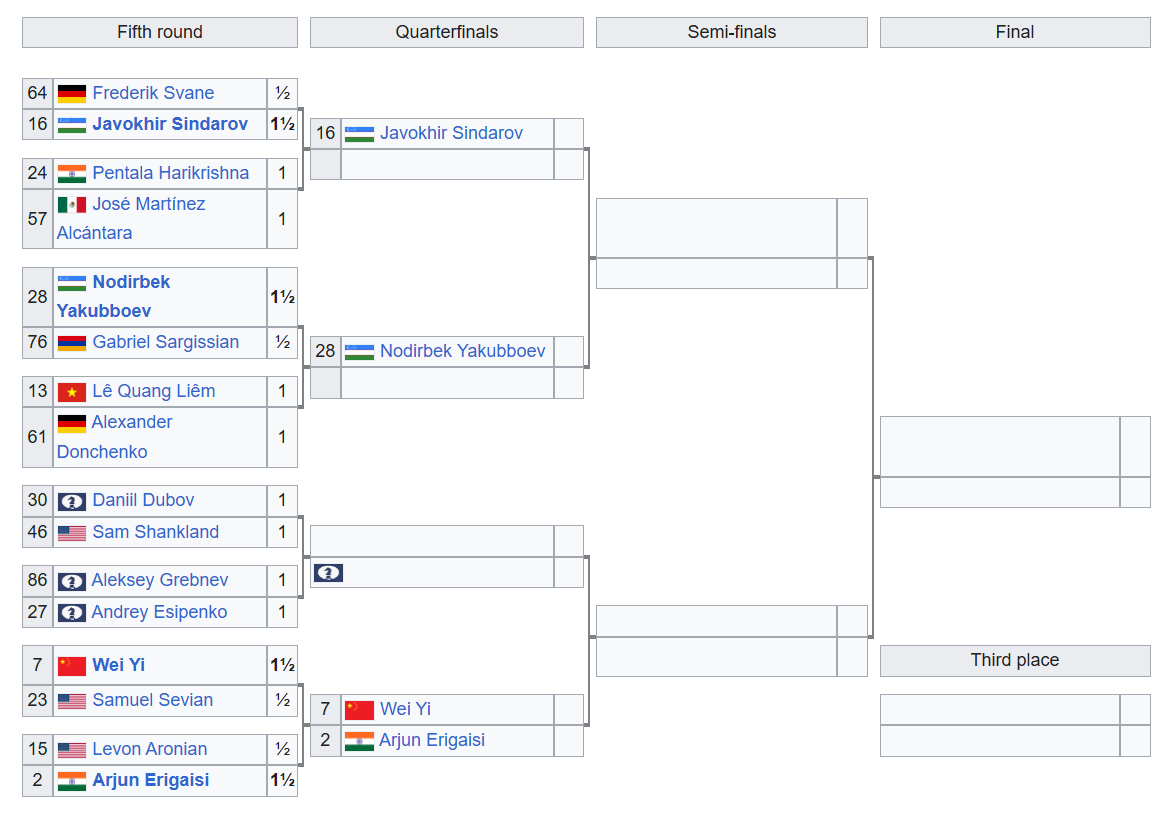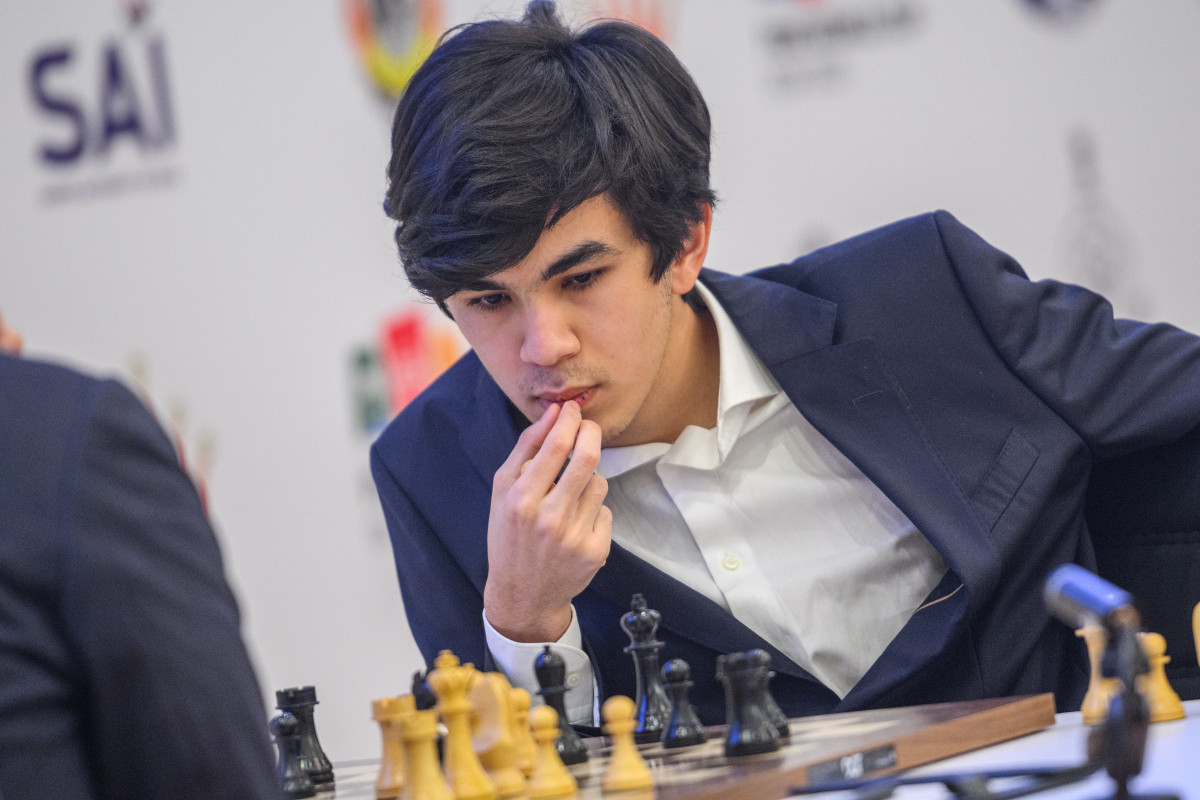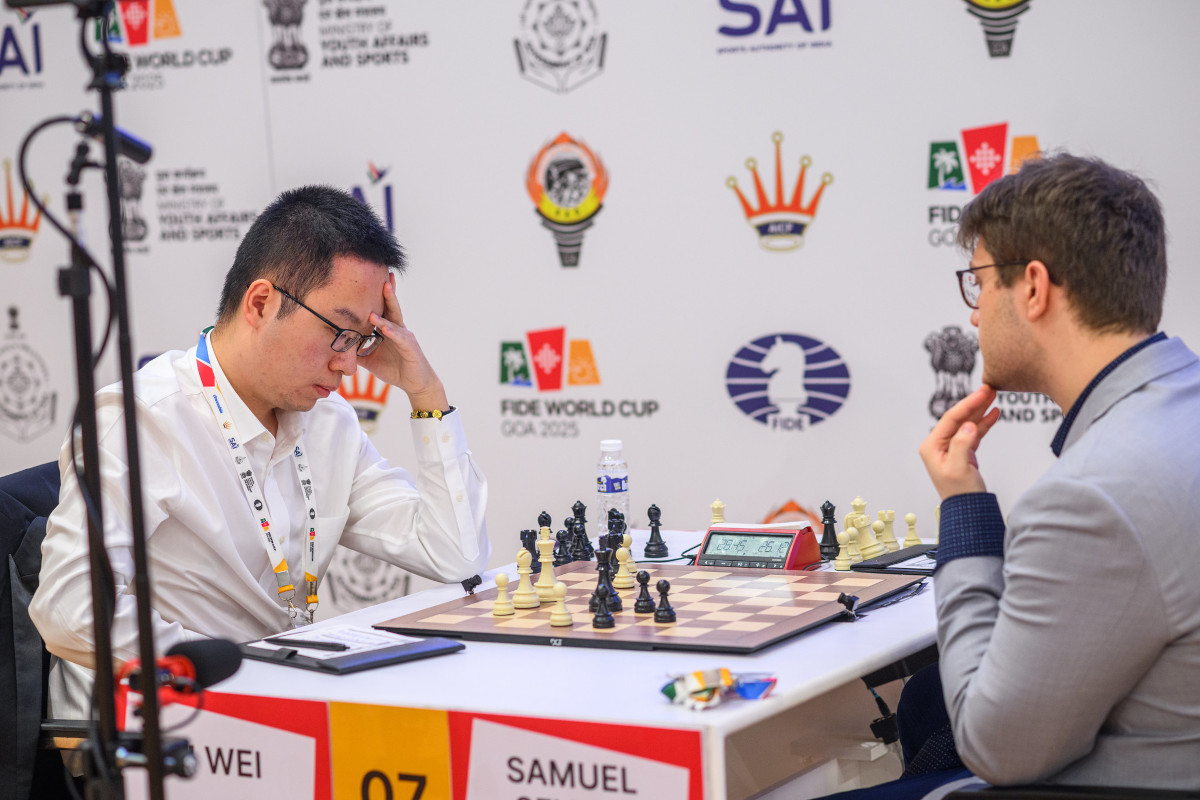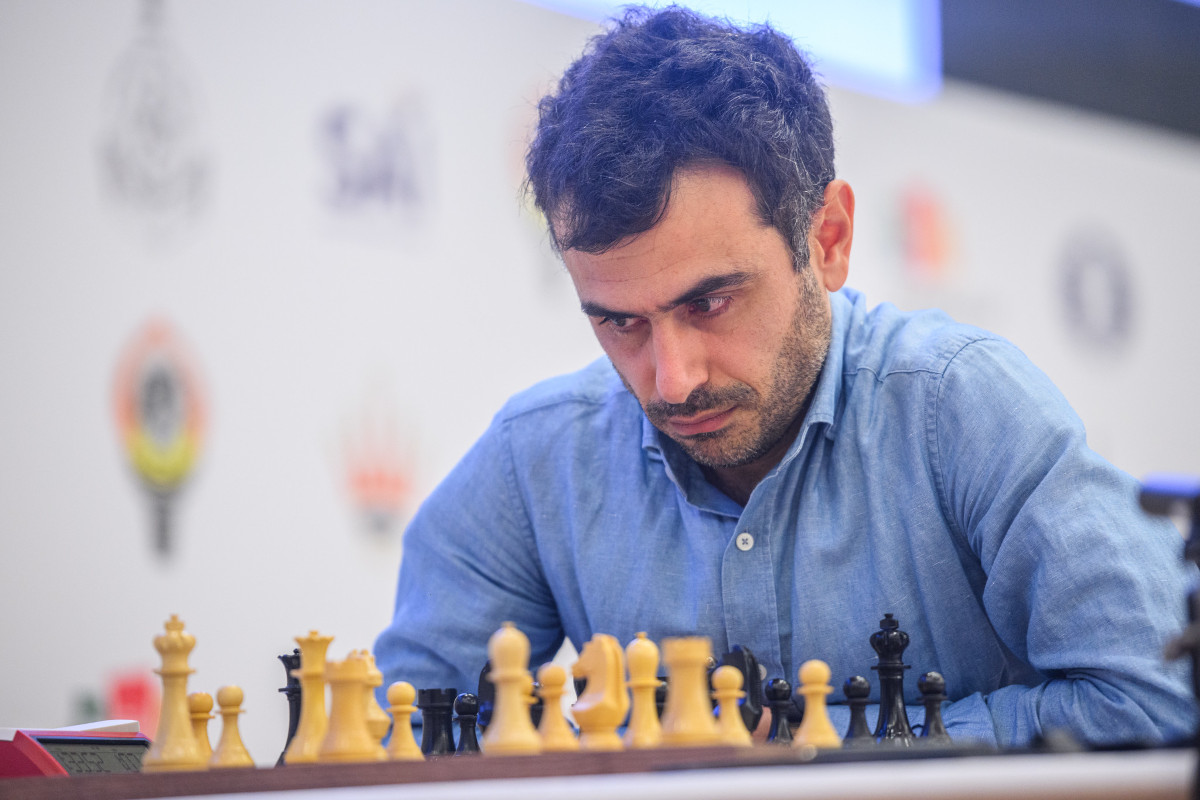Aronian, Sevian, Svane and Sargissian are knocked out of the competition
Saturday’s classical games in Goa resolved half of the round-of-16 matches at the FIDE World Cup, with four players securing places in the quarterfinals. Javokhir Sindarov, who had taken the lead on Friday by defeating Frederik Svane, held a 47-move draw from the black side of a well-known Ruy Lopez line, thus advancing to the next stage. He is joined by Arjun Erigaisi, Wei Yi and Nodirbek Yakubboev, all of whom won their second classical games.
Erigaisi knocked out Levon Aronian, Wei Yi eliminated Sam Sevian, and Yakubboev defeated Gabriel Sargissian – with both Wei and Yakubboev scoring their victories with the white pieces. Out of the four players already through, two are the highest-rated competitors from their section of the bracket: Erigaisi (2nd seed) and Wei (7th seed). They are set to face each other in what is likely to be a hard-fought encounter in the quarterfinals.
In today’s fast-paced chess world, especially online, where blitz and rapid games dominate, the traditional approach of grinding through lines of opening theory can feel overwhelming, and even unnecessary. The real challenge? Striking the right balance in your opening preparation. How deep should you go? Where do you stop? This course is built on the timeless wisdom of my legendary coach, Chebanenko, who designed opening repertoires for his “lazy” students – not lazy in attitude, but smart in approach. His philosophy? Don’t memorise. Understand.
Sindarov, seeded 16th, has not faced higher-rated opposition so far due to the elimination of the top seed in his quadrant, world champion Gukesh Dommaraju, who was knocked out by Frederik Svane in round three. Still, Sindarov’s run has included a key win over 17th seed Yu Yangyi in the previous round.
Yakubboev’s path has been similar: the highest-rated players in his section, Wesley So and Ian Nepomniachtchi, were both eliminated shockingly in round two, meaning the Uzbek grandmaster has not yet faced a higher-rated opponent either.
The remaining four quarterfinal places will be decided in Sunday’s rapid and blitz tiebreakers:
- Le Quang Liem v. Alexander Donchenko
- Pentala Harikrishna v. Jose Martinez
- Andrey Esipenko v. Aleksey Grebnev
- Daniil Dubov v. Sam Shankland


Javokhir Sindarov will face either Pentala Harikrishna or Jose Martinez in the quarterfinals | Photo: Michal Walusza
Among Saturday’s results, the most anticipated game was Erigaisi v. Aronian, and it lived up to expectations – though not for its balance. Erigaisi produced excellent opening preparation in the Giuoco Piano, equalising comfortably with black while gaining a sizeable time advantage. From there, he steadily increased the pressure. He missed a winning …Bxh2 sacrifice on move 33, but the overall trajectory of the game remained in his favour. Moreover, he managed to end the game in style: after 38…Nh3, Aronian resigned.
With Aronian’s elimination, a significant historical marker has been reached. The 43-year-old grandmaster was the only remaining player in the field with prior Candidates experience. His departure guarantees that the three players who qualify from this World Cup will all make their debut in the 2026 Candidates Tournament. Likewise, with Aronian out, the World Cup in Goa will also see a first-time winner crowned.
Find below the game in full, with annotations by GM Karsten Müller.
In this insightful video course, Grandmaster David Navara shares practical advice on when to calculate deeply in a position — and just as importantly, when not to.
Free sample video: Introduction
Free sample video: Invisible moves

Levon Aronian is the only player to have ever won the World Cup twice – he claimed gold in 2005 and 2017 | Photo: Michal Walusza
Wei 1-0 Sevian
If one skill decides more games, it’s calculation. Openings fade, plans change – but seeing clearly, comparing lines, and choosing with confidence wins points. In this course GM Ganguly turns calculation into a trainable skill with a structured path for any level. You won’t just solve tactics; you’ll learn how to think: where to start, which branches to explore, when to stop, and how to keep a crystal-clear mental board under pressure.
Free video sample: Introduction
Free video sample: Forcing moves

Wei Yi playing white against Sam Sevian | Photo: Michal Walusza
Yakubboev 1-0 Sargissian
Analysis by GM Karsten Müller
Picture this: you’ve outplayed your opponent move by move, you’re clearly better – and then the endgame slips into a draw, simply because you lacked the crucial theoretical knowledge. That is exactly where this course comes in. Without solid endgame skills, there’s no way forward. Rook endgames are most essential: they occur more often than any other type of endgame, and often make the difference between victory and half a point. If you master them, you’ll confidently convert your advantages into wins!
Free video sample: Introduction
Free video sample: Bodycheck

The 42-year-old Gabriel Sargissian had a strong performance in Goa | Photo: Michal Walusza
All games – Round 5
Replay games from all rounds at Live.ChessBase.com
EXPAND YOUR CHESS HORIZONS
Data, plans, practice – the new Opening Report In ChessBase there are always attempts to show the typical plans of an opening variation. In the age of engines, chess is much more concrete than previously thought. But amateurs in particular love openings with clear plans, see the London System. In ChessBase ’26, three functions deal with the display of plans. The new opening report examines which piece moves or pawn advances are significant for each important variation. In the reference search you can now see on the board where the pieces usually go. If you start the new Monte Carlo analysis, the board also shows the most common figure paths.
